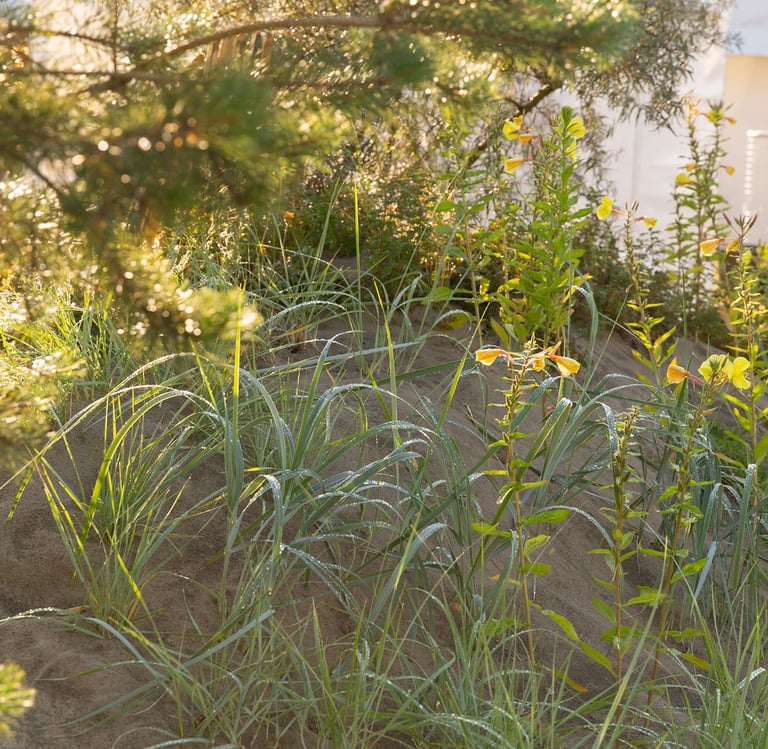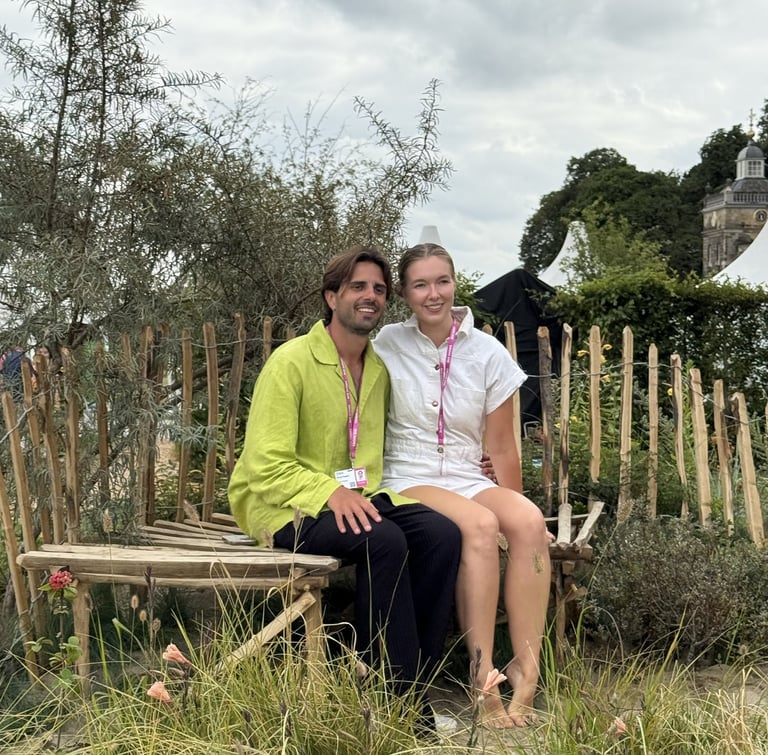
RHS Garden Show Wentworth Woodhouse
A few days with young designer Jacopo Ruggeri
15.06.25 | 3 min
R.Purkis
Jacopo has been one of my closest friends since we first met in Architecture school. There was no question that I would come to see his first show garden, but when he asked me to help introduce his Dune Garden to the public for the 5-day show, my heart fluttered. We hadn't seen each other for 6 months, but as with good friends, it didn't matter. Five years prior, we both arrived in Luzern, not knowing anyone, but excited for the two years of academics ahead. We clicked from the beginning, sharing the journey, our thoughts, opinions and humour along the way. Jacopo jokes that we've seen each other at our worst, but with that comes our best, and this thrilling achievement is the most natural progression for my dear friend, who, alongside being an astute architect, was always a botanist and landscape enthusiast.
The Dune Garden was enchanting. Facing the show's entrance, I saw it immediately and was drawn in by its gentle grace. Fountain grasses swept across the front lower part of the dune, and delicate pastel-yellow petals of an evening primrose variety named Apricot Delight, still open from the night before, seemingly floated on and amongst the grass. A weathered chestnut paling fence with Sea Buckthorn as its backdrop, drew itself up across the brim of the dune, bent and bedraggled in all the right ways. In front, nestled among purple skullcap & ladies bedstraw, a handcrafted bench made from the same chestnut stakes, sculpturally entwined with the fence in a crescent form. Completing the composition, two wind-blown Scots Pines sheltered and framed a seductive outdoor shower structure whose water drained into the surrounding planting. To the back of the dune, native varieties of grasses, tall evening primrose & burnet rose supported its preservation with their deep roots, while Sea Heath, Scabious & Nodding Thistles grew in the shadow of the pines. It was a glorious scene, so carefully curated that one felt they were by the sea even in the middle of Yorkshire. The more I looked, the more delicately placed details I noticed, the inconspicuous shower seat/ledge, the footprints in the sand, the elegant helleborine orchids around the bench, and of course, the endless drone of pollinators delighted with the temporary display.
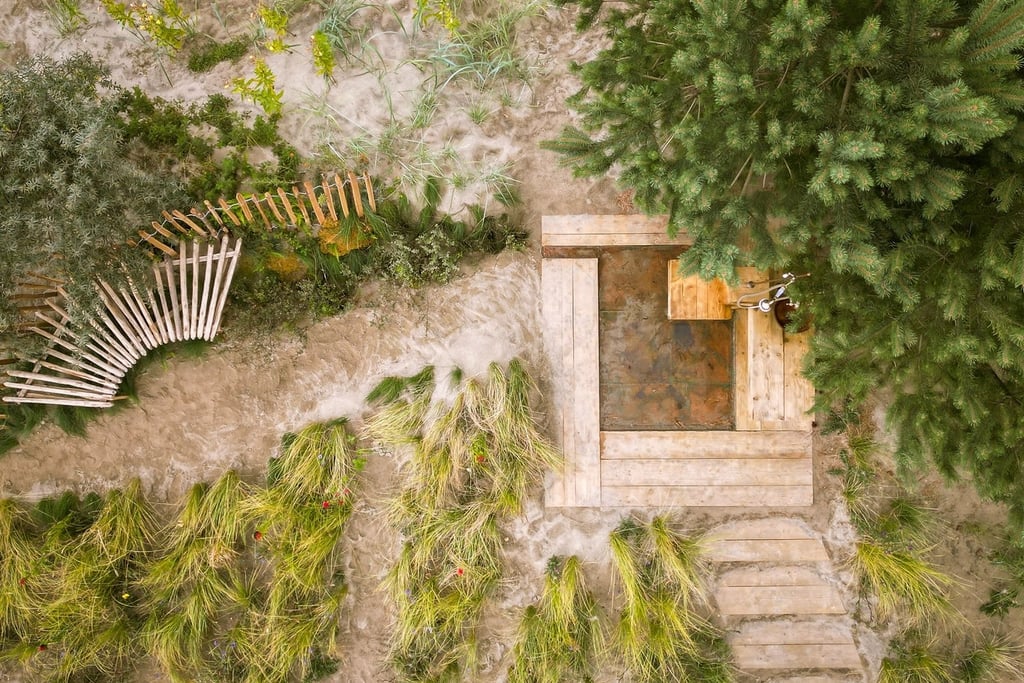

Having never been to Fire Island, the place Jacopo credits as inspiration for the show garden, I was intrigued to see how his descriptions of trips past manifested in physical form. Hearing him discuss the cultural significance of dune scapes that nourished queer culture and how the placement of the structural pieces in his garden created intentional yet semi-veiled views was captivating. The naturalistic planting style of having cultivated species bleed into the wild landscape with no heavy borders delineating space or prohibiting movement reflected beautifully the ideology, and seeing his husband's eyes light up, with pride and memories, was the absolute icing on top.
Jacopo first told me he was applying for the Wentworth Woodhouse show in a tiny cafeteria in the back of an Asian Food Store. We sometimes met there to escape our respective offices, eat lunch and chat. An RHS display was something hehad in his crosshairs for a while, and understanding his standard of delivery, I knew the garden would be good. But nine months on, having got through all of the preliminary stages, tuned the design, overcome challenges, found sponsors, nurseries and a brilliant contracting team, the final product excelled in concept and execution, receiving a Silver-Gelt medal, a feature on BBC's Gardeners World and overwhelming public support.
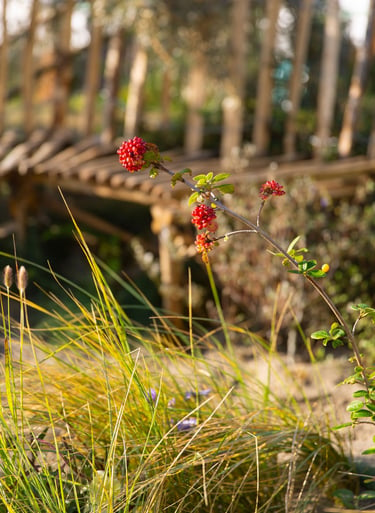

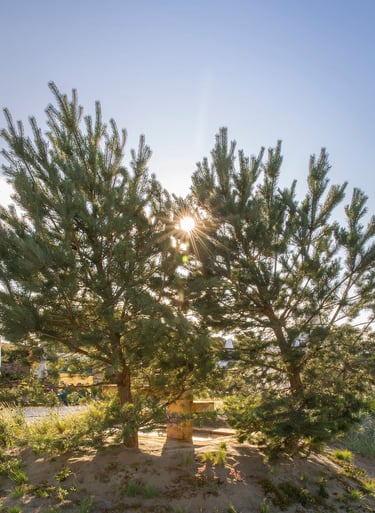

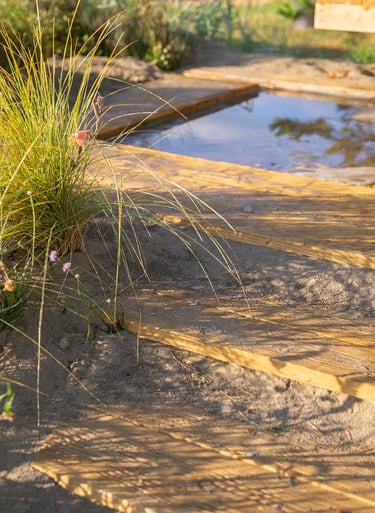

The entire event, held for the first time on the grounds of Wentworth Woodhouse, seemed to have been a complete success. The other two young designers, Sam Dryell and Luke Coleman, put together triumphant, unique gardens, and the supportive, celebratory atmosphere was infectious. Being the first RHS show I attended, the variety and dedication blew me away, from the long border displays to the bonsai, the flower arrangements and community projects. The long standing British fascination with horticulture, gardens and landscapes is truly still thriving and innovating. Above all of the other displays, the fruit and vegetable competition presentation inside the house tickled me the most. Growing up, I attended local highland games where baking, preserving, and fruit/vegetable competitions often sparked neighbourly banter. However, I hadn't given the tradition much thought before. Perhaps it was the juxtaposition of the simplistic presentation of vegetables on tables accompanied by handwritten notes stating their ranking in an ornate, high-ceilinged room on the second floor of a manor house. Or the long queues of people snaking along the display tables looking at each specimen, pointing and exclaming things such as 'blimey look at the length of those carrots', I found the whole thing quite amusing. While I have no idea what the criteria for a winning potato are, I have decided that the tradition of formal fruit / vegetable competitions is uniquely odd yet absolutely fantastic. Why not celebrate ordinary things crafted with love and care? Really, what is the difference between the most scrumptious-looking tomato and a hand-painted kitchen tile, for example? They are both forms of creative art, only one withers and decays, which perhaps even adds to its beauty?
With that side-tracked thought, I will finish this little reflection on the flower show and congratulate Jacopo once again. To the first of many gardens to come! May you persevere, follow your heart and continue to succeed, my dear friend.
